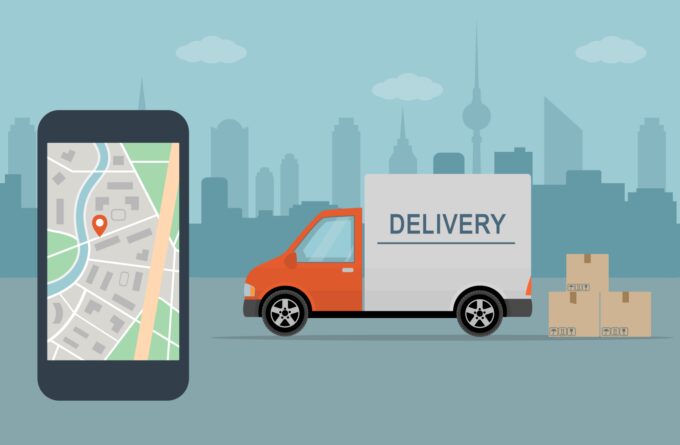For many, the idea of a good trucking concern is often illustrated best by the chrome and metallic colors that adorn massive trucks, while colorful wraps are all the rage with smaller carriers out there. In truth, the level of logistics service that a concern is able to provide will be based more on its bits and bytes than horsepower and chrome alone. This article looks at the importance of professional information technology (IT) for this process and as a means to achieve success in logistics of any form, size and sort.
Improved planning

Source: mhhealthcare.com
Logistics is based on accurate planning and the analysis of the various possibilities and mitigating for risk. High-value goods such as car shipping require detailed planning for collection from the manufacturer, shipping dates for minimal time at sea, and then road or rail delivery to the dealers. Large consignments require large amounts of space and labor for these processes, something that cannot be done without thorough planning. The reality in today’s tech-driven world is that this is only now possible through logistical computing. The logistics planning software that is available as well as automated systems for warehouses and delivery, are essential if you are to keep up with volumes and make all deadlines.
Logistics planning in today’s fast-paced environment cannot be done without reliable IT systems and infrastructure. The basics of all transportation, customer satisfaction, warehouse management, and more needs to be done online in an integrated fashion so that everyone involved in the business is able to keep track of the processes and timeframes related to the logistics and transportation. The only way to do this is in the cloud. With an industry that is expected to grow by almost 3% by 2024, to ensure future improved growth means investing in not only people but also processes and IT systems that can drive innovation.
To track

Source: piicomm.ca
Monitor, save, and analyze historical data to make improvements and changes to routes, systems, and processes. If you’re in auto transport, for example, the owner will want to be able to track and follow the progress of their delivery and make arrangements for storage, collection and simply have peace of mind knowing where their vehicle is at all times. There is no longer the need for charts and telephone calls to find out where the load is, it’s as simple as accessing an app on your smartphone or handheld device to see exactly where the delivery is at any given time. Tracking and tracing of deliveries is not only for high-value goods but also for everyday smaller deliveries, so that the transport company is able to plan ahead and continue to take on jobs based on actual capacity and real-time information. For more information check shiply.com/us .
Looking to the future, many logistics and e-commerce companies are considering the use of drones for deliveries and whether this is possible, traceable, and attractive to customers. Whether you agree with the idea of using such innovation in the logistics industry, not being adaptable and open to new ideas can be considered foolhardy when considering the future of the industry.
New blood in the logistics industry

Source: acropolium.com
Beyond the call for new long-haul truck drivers that we have all been hearing as a result of the COVID pandemic and losses in the industry, there is a need for the industry to make itself attractive to young, innovative tech specialists who can drive the change required to ensure the industry aligns with increasing demands. Research is predicting that logistics and supply chain professionals will start to enjoy increased prestige not only in the industry, but across industries as the demand for strong, tech-driven logistics grows.
There is the expectation that over the next few years, not only will the need for front line, on the road and in the warehouse, staff reach the millions across the US, but that there could be the demand for at least 1 million specialists in the Internet of Things side of the supply chain. Whether you are considering changes to your IT system or thinking about innovation for the future, the kinds of technologies that a few years ago might have seemed like a sci-fi movie are closer to reality than ever. The use of autonomous warehouse vehicles and airborne centers may not be something that only our grandchildren grow up with but are already being considered.
Keep clients involved

Source: everstox.com
As aforementioned in both the examples provided, customers of high-value goods and even simply those that they are attached to, which again would relate to the car shipping industry, want to be kept involved in the process, so there needs to be a mode of communication, tracing the goods are one thing, but then being able to speak to someone or chat about expect delivery times and any changes based on weather and such forth are vital for professional logistics.
A simple way to achieve this is through software as a service, which has specific logistics solutions to the aspects noted herein. The idea is not to buy the software and re-train all staff, but to have the software provided through the cloud and access this using existing hardware and smart technology. While your priority might be getting trucks on the road, there is an increasing emphasis on ensuring that the software and hardware that allow that to happen is not only suited to the current context but is future-proof.
Indeed, there will be associated costs associated with the uptake in new logistics tech, but it is highly likely that without the type of improvements mentioned herein, your transport and logistics company will not realize its true potential. Forward logistics is one of the biggest issues and casualties of the last 18 months, and this demand of getting products into the stores, into the hands of customers, or into the e-commerce warehouse is likely to grow as consumers imagine a ‘normal’ festive season. Beyond this, keeping the logistics and supply chain industry in line with technological innovation and trends is key to ensure that it not only survives the next global upset but thrives where others are flagging.







